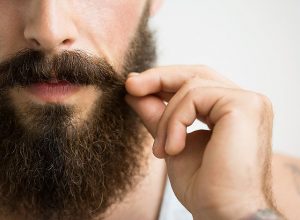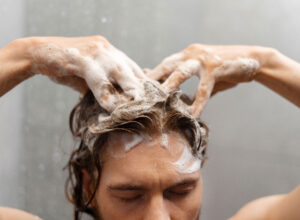Leave behind these common misconceptions for your best hair.
Myth 1- Dandruff and a dry scalp are the same
Unfortunately, the annoying itch and embarrassing flakes are not something extra conditioner will cure. “People often think that they have ‘dry’ scalp, when in fact it is dandruff,” says Mount Sinai Hospital dermatologist Dr. Angela Lamb. “At the first sign of dandruff, do not be in denial.”
Your flaking is most likely due to your skin’s overreaction to yeast or fungus that occurs naturally on the scalp. Things like stress and changes in the weather can flare the condition, too, she says. Luckily, you can turn to over-the-counter antidandruff shampoos packed with selenium sulfide and salicylic acid, like Selsun Blue, to freeze flakes in their tracks. “You don’t have to suffer or avoid dark shirts because of this,” Dr. Lamb says. “It’s easily treated.”
Myth 2- Baldness comes from your mother’s side
You might have inherited some quirks from mom, but balding isn’t necessarily one of them. Though it’s estimated that 80 percent of balding is hereditary, the strength of your strands is affected by plenty of other variables.
According to a McGill University study, several genes—and not necessarily all from mom—contribute to how much hair you have. In fact, one-third of all men experience hair loss by age 45 from a testosterone-and-enzyme combo called DHT.
But even if all familial signs point to baldness, there are steps you can take now to keep your locks fuller longer. Consult a dermatologist for advice regarding prescription or over-the-counter solutions to hair loss, including minoxodil and finasteride—more commonly known as Rogaine and Propecia.
Myth 3- You need to shampoo your hair daily
If you’re shampooing every day for the sake of your strands, the extra effort might actually be doing more harm than good. “Cleanliness is an American obsession that has done nothing beneficial for the quality of our hair,” says Bumble and bumble stylist Colin McCarthy. “Other than men with extremely fine hair that becomes greasy quickly, most men should limit shampooing to once or twice a week.”
Over-shampooing can strip your hair of natural oils that keep hair looking shiny and healthy. When the nutrients get washed out, your hair can go into overdrive, creating one vicious, greasy cycle.
“A daily rinse is a sufficient refresh to reboot a post-workout sweat,” McCarthy says. In other words, wash it when you’re active.
Myth 4- Gray hair is caused by stress
Though stressing out is never good for your body, scientists are fairly certain it won’t cause your hair to turn white overnight. According to a Unilever study, scientists “found a very strong influence of genetic factors on variation in hair graying.” That means your chances of turning gray have more to do with hard-wired genetics from mom and dad than everyday environmental factors.
But if you are predisposed to turning gray, seek out purple shampoos that moisturize dried-out strands and prevent gray hair from turning brassy.
Myth 5- Hair growth products don’t really work
If you don’t have the thick, healthy locks from your youth, don’t make the mistake of assuming all products promoting hair growth are gimmicks. There are a few brands that can deliver the hair you had, or help slow down the effects of hair loss.
Propecia, a prescription medication, prevents testosterone from converting to DHT—specifically targeting male pattern baldness on the vertex and mid-scalp area.
Rogaine reboots hair’s natural growth cycle by reinvigorating shrunken hair follicles. Essentially, this creates a thicker strand of hair in the process, wherever it’s applied topically.
These products don’t work for everyone. Consult your doctor to find the best option for you.




